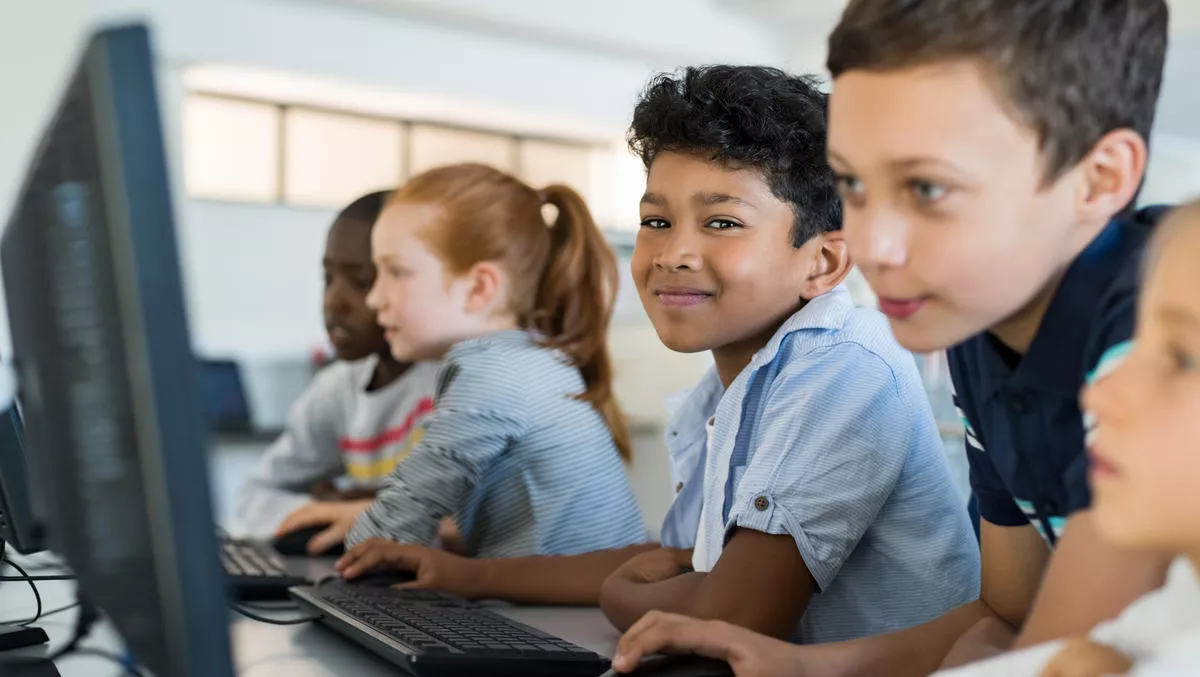
7 ways educational technology improves classroom experiences
In today's classrooms, educational technology integration is an expected standard rather than a fortunate luxury. Students in the Net Generation (loosely defined as those who have consistently grown up around computer-based technology) view technology as something more than just computers or the internet.
Research by Gregory Roberts from the University of Pittsburgh-Johnstown sets this expectation clearly: "Technology is something that adapts to their needs, not something that requires them to change.
Meeting educational standards and student expectations is important, but can educators and administrators truly justify the cost? Adding technology is an expense, but it can also be a cost saver when implemented correctly.
The use of properly integrated educational technology can also lead to:
- Better student outcomes
- More well-adjusted students
- Decreased administrative burdens on educators
- Improved student retention
In short, integrating technology is good for education.
Reasons to integrate educational technology in the classroom
Even with research that demonstrates the positive outcomes of technology integration, some teachers and administrators may still be hesitant. Teachers may already feel overworked and underpaid, and the recent complications of the pandemic only add to their responsibilities.
For those who are on the fence about the time investment required to learn new programs or devices, consider the following list of reasons for investing in educational technology within the classroom.
Access to additional resources
In classrooms without technology, students can learn from books, printed worksheets, or their teacher. Once educational technology is incorporated, students can access computerized simulations, video lessons, games, and adaptive learning modules.
For classrooms with internet access, students have a limitless supply of new information and resources available to aid in their learning.
Increased student engagement
Today's students have never lived in a world without technology. Social media, smartphones, and videos are deeply engrained in youth culture, and embracing this technology (instead of shaming it) can lead to increased engagement among students.
Building gamification into lesson strategies can keep students interested and motivated towards learning objectives. Makerspaces, augmented reality, and virtual simulations can all be used to help the material come alive in the classroom.
Improved accuracy in skill assessments
With paper-based testing, teachers must spend hours crafting tests and quizzes or use prefabricated tests that may or may not adequately reflect student performance.
Grading must be done manually, which takes away from lesson planning and other student engagement activities.
With technology, computerized testing can include intricate simulation assessments, offer adaptive testing, and provide students with immediate feedback.
Teachers can also save considerable time on grading tests, and computerized grading improves accuracy and provides more granular detail in individual student performance.
Self-paced education
Not all students learn at the same pace, and students have different strengths and weaknesses.
In a traditional classroom environment, a teacher must cater their lessons to the average of all learning styles and abilities in a classroom. This leaves some students falling behind, yet others are left unchallenged.
With educational technology, however, more advanced students can move ahead, while students who are struggling can work through the material at their own pace.
Lessons can also be easily adapted to different learning schedules. Students who aim to complete a class in summer school, for example, can receive a customized schedule that guides them through the material at a faster pace.
Remote learning opportunities
The recent COVID-19 pandemic has brought heightened awareness to the need for remote learning opportunities. Students need flexibility in education for a variety of reasons, including health concerns, inclement weather, and adaptive learning environments.
Without the technological infrastructure, many school districts are left scrambling to provide public education to students when a hybrid or remote learning scenario becomes environmentally necessary.
Implementing educational technology is necessary for remote learning, and the upfront investments can help students and faculty bridge the learning gap when schedule interruptions occur.
Connects resource access through the cloud
Cloud-based storage keeps information organized, readily available, and easy to access for teachers and students.
Accessing shared resources via the cloud also helps to lower resource costs for education systems since multiple academic partners can access a single resource remotely.
Sharing cloud-based resources also promotes real-time collaboration, minimizes storage capacity needs, and simplifies program updates and maintenance for IT teams.
Promotes student innovation
Technology is embraced in nearly every aspect of our current environment, so teaching students how to use technology responsibly helps to promote technological literacy and student innovation.
Instead of asking a question and expecting a teacher to produce the answer, students are encouraged to use technology to seek out information and become self-sufficient, contributing members of society.
Solution for integrating educational technology
Taking a piecemeal approach to technology integration can be frustrating for both students and teachers, and it can cost organizations considerably more to implement in the long run.
Choosing a fully developed platform that combines classroom management with video conferencing tools will create the most seamless and cost-effective user experience.
When teachers are facing technology challenges solo, it creates frustration and resistance to additional use of technology.
Educators can be supported with device management tools that allow IT leaders to monitor devices and troubleshoot issues remotely. Teachers can get the immediate help they need from any work location – at home or in the office – minimizing device downtime and saves on administrative costs.
Nadav Avni is the marketing director at Radix, a technology provider of device management, classroom management and distance learning solutions.

